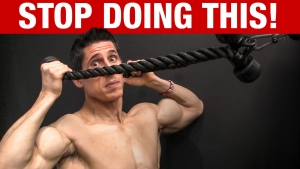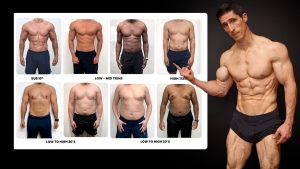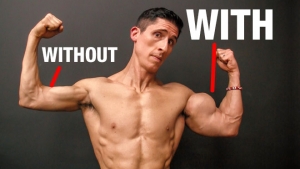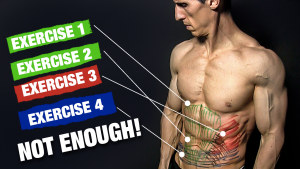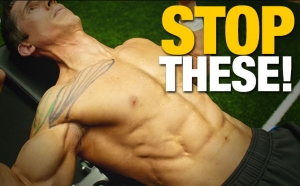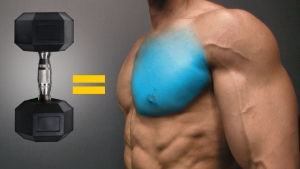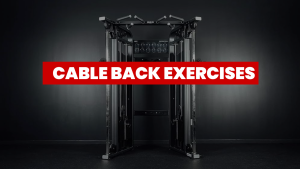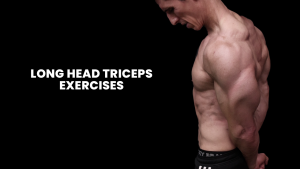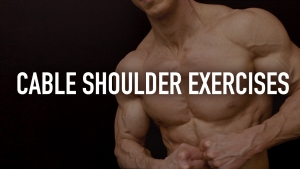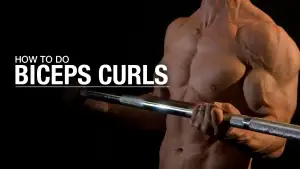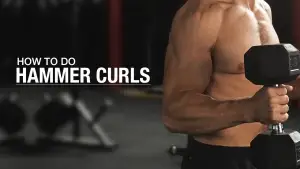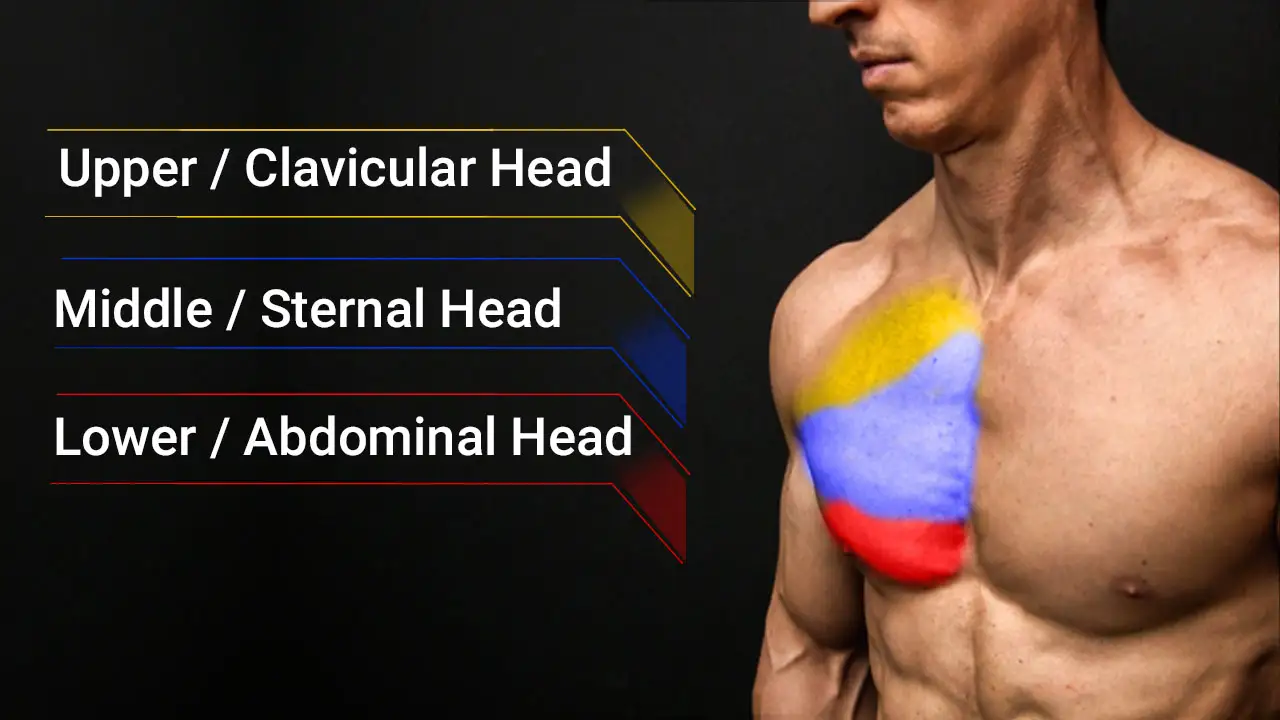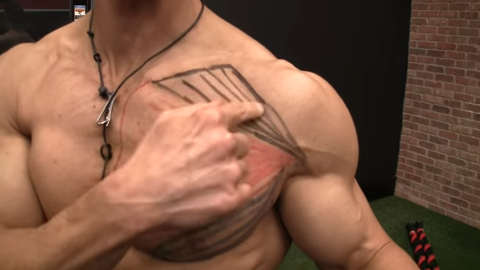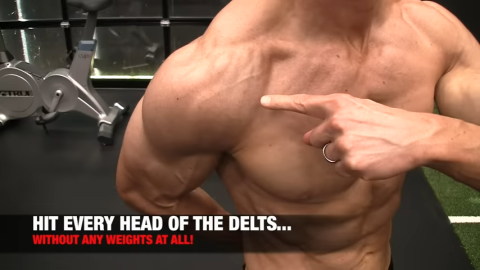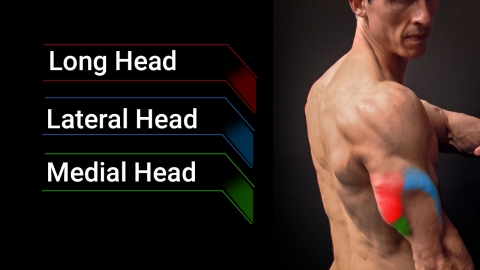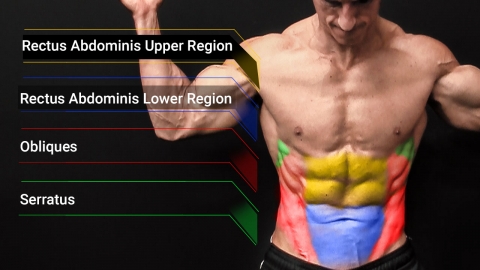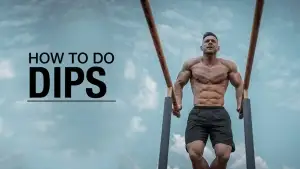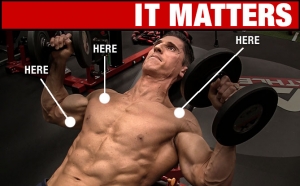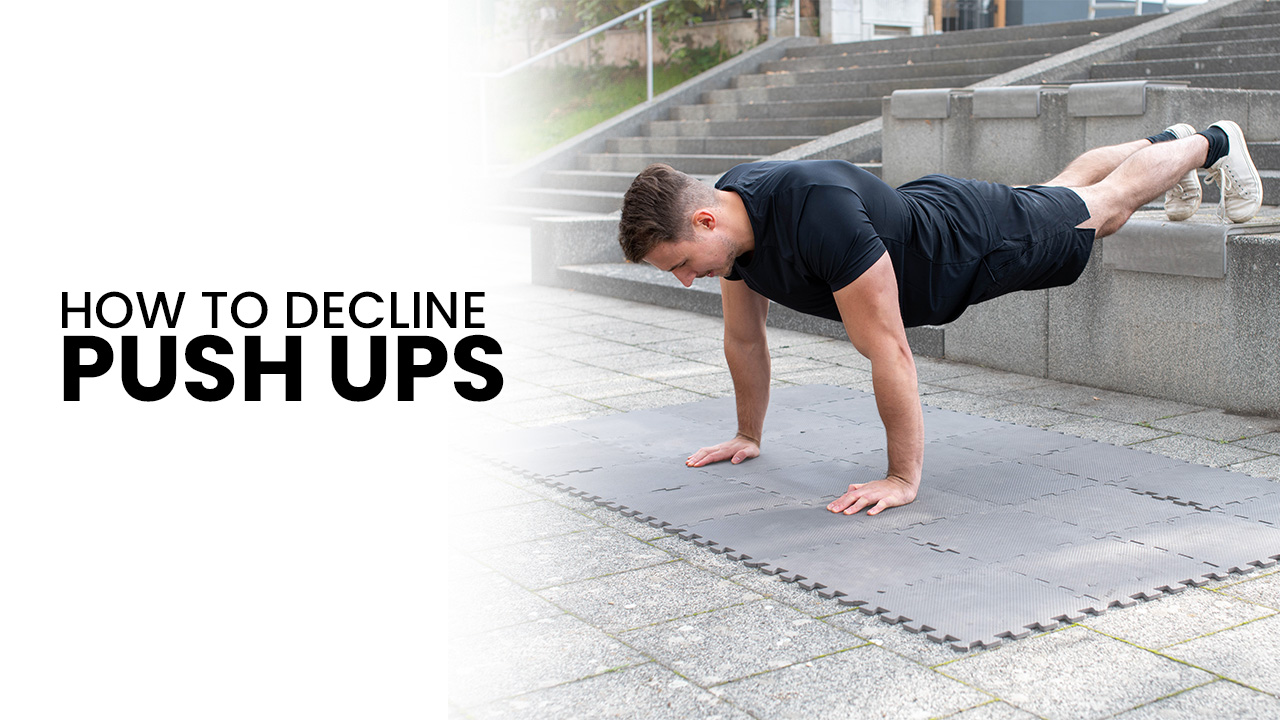
WHY do decline pushups?
The Decline Pushup takes a classic bodyweight exercise and transforms it with nothing more than a shift in angle.
Elevating your feet changes the challenge completely.
It demands more stability, greater control, and a level of tension that exposes weaknesses you can usually hide on the floor.
It’s the kind of Push-Up variation that punishes sloppy form but rewards excellent exercise technique, making it one of the best (and most underrated) tools for building real, transferable strength.
Today, you’ll discover why the Decline Push Up is so effective, how to do it correctly, the mistakes that sabotage progress, the best variations to try, and how to work it into your training program for great results.
DECLINE PUSHUPS: MUSCLES WORKED
A Decline Pushup is deceivingly simple. You just raise your feet and go, right? But what’s happening under the hood is a much bigger story.
Changing the angle doesn’t just make the move harder. It shifts how your body recruits muscle fibers and demands more contribution from supporting muscle groups.
With proper form, the Decline Pushup is a full upper body and core workout in one.
In order to learn how to do it correctly, it’s important to understand the muscle groups behind the movement.
UPPER CHEST
The main targeted muscle group is the clavicular portion of the pectoralis major, better known as the upper chest.
This muscle sits at the top of the pecs, running from the clavicle down into the upper arm.
Its main function is to flex and horizontally adduct the shoulder, essentially pulling the arm forward and across your body.
During Flat Push Ups, the mid-pecs do most of the work. But when your feet are on an elevated surface, the pressing angle shifts upward, forcing more recruitment of these clavicular fibers.
Over time, this leads to better muscle hypertrophy in a region where most lifters struggle to grow, giving the chest a fuller, more balanced look.
ANTERIOR DELTOIDS
The anterior deltoids form the front portion of your shoulder, running across the front of the upper arm where it meets the torso.
Their function is to help lift the arm forward (shoulder flexion) and assist in pressing movements.
During Decline Pushups, the steeper body angle means the shoulders must stabilize and push harder to keep you moving smoothly.
Done correctly, they support the chest rather than dominate the movement.
But if you flare your elbows or let your form slip, the shoulders take over, which not only reduces chest activation but can set you up for long-term shoulder stress.
TRICEPS BRACHII
The triceps run along the back of your upper arm, with three distinct heads (long, medial, and lateral).
Their primary role is elbow extension or straightening the arm under load.
In Decline Pushups, the triceps are heavily involved at the top half of the rep, where they lock out the arms against increased resistance.
The higher your feet are, the more leverage shifts into the arms, making the triceps one of the limiting factors.
This extra tension translates into noticeable gains in triceps size and carryover strength for any pressing movement, from pushups to barbell bench.
CORE MUSCLES & SERRATUS ANTERIOR
Your core muscles include the rectus abdominis, obliques, and transverse abdominis. They work together to keep your body rigid in the Decline Pushup.
With your feet elevated, gravity tries to drag your hips into extension, and it’s the core’s job to resist that pull.
This makes every rep a built-in isometric core workout, training anti-extension strength that protects the spine, sharpens posture, and makes your pressing power more efficient.
Alongside the core, you have the serratus anterior, which is referred to as the “boxer’s muscle” that lines the ribcage.
This muscle stabilizes the shoulder blades as you press. It protracts the scapula, keeping your shoulders in the right position for force transfer.
Weakness here often leads to poor pressing performance or even rotator cuff injuries, but Decline Pushups strengthen it naturally.
Together, these stabilizers turn a Simple Pushup into a move that not only builds the chest and arms but also reinforces long-term shoulder and spinal health.
HOW TO DO DECLINE PUSHUPS
The Decline Pushup isn’t about randomly throwing your feet on a box and hoping for the best.
To get the most out of this Push-Up variation, you need the right starting position, controlled range of motion, and precise muscle engagement.
Once you’ve got the form down, this is one of the simplest yet most effective tools for building upper body strength without fancy exercise equipment.
Here’s how to do Decline Pushups:
DECLINE PUSHUPS

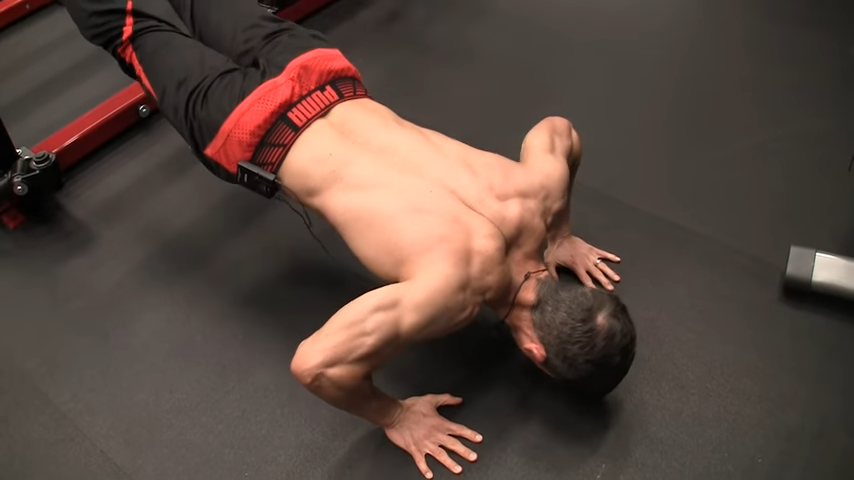
HOW TO DO DECLINE PUSHUPS:
- Place your feet on a raised surface like a bench, box, or even a stability ball. A bench is stable, and a ball adds a greater core challenge by forcing more work from your stabilizer muscles. You can even use a wall by walking your feet up. This ramps up the difficulty while demanding total-body control.
- Hands go just outside shoulder width on the floor or on Push-Up bars if you want more range of motion. Keep wrists stacked under shoulders to protect the joints.
- Walk your feet back until your body forms a straight line from shoulders to ankles. Keep the balls of your feet pressed into the surface, brace your core, and lock into a solid plank position.
- Lower your chest under control until it nearly touches the floor. Focus on smooth muscle activation of the pectoral muscles and avoid collapsing at the hips.
- Drive through the floor and return to the top without letting your elbows flare too wide. Push the shoulder blades forward at the top for full contraction, engaging the pectoralis minor and serratus anterior.
WHAT MAKES IT EFFECTIVE: The Decline Pushup isn’t just harder. It’s smarter. Elevating your feet increases the exercise stimulus, forcing greater chest and arm recruitment while adding a serious core challenge. Unlike Incline Push-Ups, which focuses on the lower chest, the decline version shifts load higher, correcting muscle imbalances and driving new muscle growth.
DECLINE PUSHUPS: COMMON MISTAKES
Even the best push-up variations can go wrong if your form isn’t dialed in.
Too many lifters treat the Decline Pushup like just another rep to crank out, but small errors add up fast.
And this can lead to limited muscle growth, stalled upper body strength, and even risking injury.
Here’s how to avoid the biggest mistakes I see as a personal trainer when coaching Decline Pushups.
SAGGING HIPS
The number one mistake is letting your hips drop toward the floor.
Once you lose your plank position, your lower back takes the hit while your core checks out of the exercise.
Not only does this kill the built-in core challenge of the movement, but it also leaves you with terrible mechanics that do nothing for chest development.
The fix is simple: brace your abs as if you’re about to absorb a punch, squeeze your glutes, and lock in a straight line from shoulders to ankles.
Whether you’re on a bench, a box, or even a yoga mat, treat your midsection as the anchor.
FEET TOO HIGH
The second mistake is cranking your feet way up onto a tall surface.
Sure, you want your feet higher but not to the point where the exercise becomes a pseudo Handstand Pushup.
That’s fine for advanced push-up challenges or targeted shoulder strength, but if your fitness goal is chest and arm development, it completely changes the exercise.
Instead, keep your raised surface to about 12 to 24 inches. This keeps the loading in the chest where it belongs, while still giving you the added exercise stimulus of elevation.
For advanced lifters, rotating in Stability Ball Pushups at a moderate height is a smarter way to increase difficulty without losing focus.
FLARING ELBOWS
Letting the elbows flare wide is one of the fastest ways to wreck your shoulders.
When your arms drift out to 90 degrees, you put the joint under awkward torque and invite overuse issues.
You also reduce chest muscle activation, leaving the pectoral muscles under-stimulated.
A better fix is to keep your elbows tucked at about 45 degrees relative to your torso. This keeps stress on the pecs and triceps while protecting the joint.
If you want more variety, adjust hand position instead. You can use a diamond shape setup for triceps focus or mix in Incline Push Ups to balance chest development.
RUSHED REPS
Another common mistake is turning Decline Pushups into a speed contest.
When you bounce off the floor or cut the lowering phase short, you’re relying on momentum instead of muscle.
That eliminates time under tension, which is one of the key drivers of muscle growth, explosive power, and long-term progress.
Instead of rushing through sloppy reps, control the eccentric by lowering slowly, then drive up with intent.
If you’re too strong for bodyweight alone, don’t cheat the tempo. Simply add resistance with a weighted belt or resistance bands to apply true progressive overload.
SHORT RANGE OF MOTION
Cutting your reps short is one of the easiest traps to fall into.
Stopping halfway down means you never get a full stretch in the chest or activation in the supporting stabilizer muscles.
Likewise, failing to lock out at the top cheats the triceps and serratus anterior of their role in the press.
Full range of motion is non-negotiable so be sure to lower until your chest is just above the floor, then press all the way to lockout with control.
If you can’t maintain that standard, scale the exercise down.
You can lower the height of the bench, reduce your training volume, or build your strength level gradually until you can handle full reps.
IGNORING VARIETY
The last mistake is sticking with one style of Decline Pushup forever.
Your body adapts quickly, and if you never change the angle, tempo, or resistance, you stop creating new exercise stimulus.
The fix isn’t to abandon Pushups. It’s to rotate them intelligently.
Alternate Decline Pushups with other push-up variations like Plyo Push Ups, Dumbbell Pushup Rows, or Stability Ball Pushups to challenge new patterns.
Program them into your training routine just like you would barbell lifts.
You do that by adjusting sets, reps, or load to match your fitness goal, your strength standards, and even reps by weight and age.
Combine that with smart nutrition and recovery, and you’ll keep making progress without relying on a smith machine or endless heavy presses.
DECLINE PUSHUPS VARIATIONS
The Standard Decline Pushup is a solid strength move on its own, but you don’t have to stop there.
By changing the angle, tempo, or movement pattern, you can turn a simple exercise into a much more appropriate challenge for your fitness level.
The following three variations are designed to hit your chest and shoulders from new angles, reveal weak spots in your form, and unlock higher levels of muscle activation and strength.
KNEE PUSHAWAY

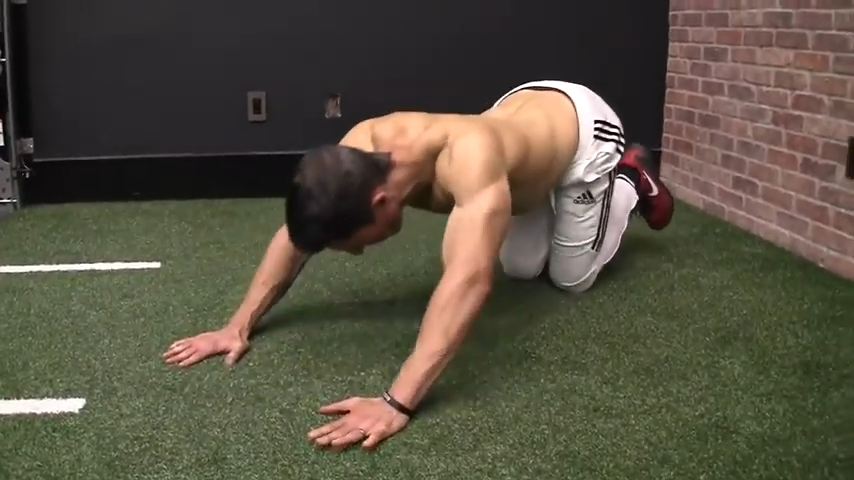
HOW TO DO THE KNEE PUSHAWAY:
- Start in a pushup position with your knees on the floor instead of your feet.
- Place your hands just outside shoulder width, brace your core, and keep your body in a straight line from head to knees.
- Lower your chest toward the floor under control, then press back up.
- At the top, push your body slightly back toward your heels before coming forward again into the next rep.
WHAT MAKES IT EFFECTIVE: The Knee Pushaway is an excellent entry point for beginners who aren’t yet ready for full Decline or Standard Pushups. By working from the knees, you reduce the load while still practicing proper plank position and pressing mechanics. The pushaway motion adds an extra challenge to your core and shoulder stabilizers, teaching you how to control movement through the entire range. This makes it a smart stepping stone in bodyweight training, helping build the strength and stability needed for harder pushup variations.
PROWLER PUSHUP

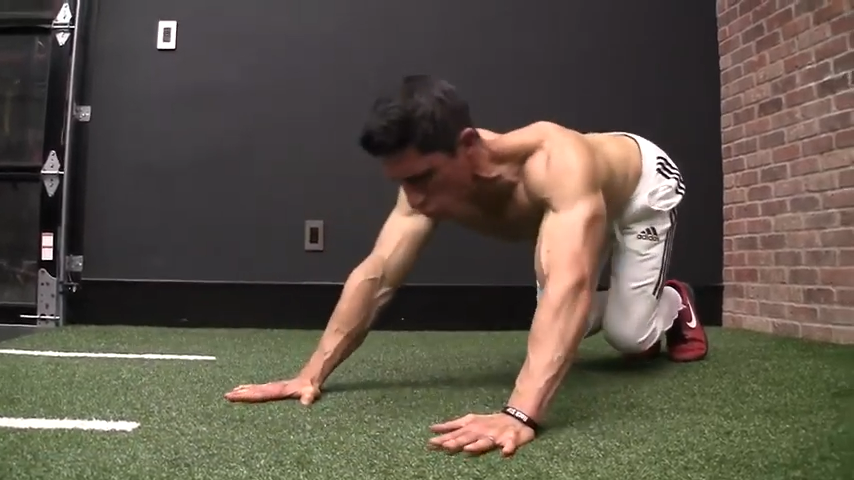
HOW TO DO THE PROWLER PUSHUP:
- Start with your weight on your hands and feet, setting your hands directly under your shoulders and feet about hip-width apart.
- Bend your knees slightly but keep them hovering off the ground.
- From here, brace your core and lock in a straight line through your upper body, from head to hips, keeping your back flat and tight.
- Your hands stay planted the entire time. Shift your torso forward and down, letting your shoulders travel past your wrists as you descend into a Pushup.
- Keep the knees lifted, core strong, and spine neutral.
- From the bottom, press yourself back up into the hover position. Keep your hips steady and your knees still off the ground. That’s one rep.
- Reset your brace and repeat, smooth and controlled, until form begins to slip.
WHAT MAKES IT EFFECTIVE: The Prowler Pushup takes away all your chances to cheat on the Push Up exercise. With the knees floating and the hands locked in place, you’re forced to maintain constant full-body tension. The forward lean increases the demand on your chest, shoulders, and triceps while your core fights to keep your hips from collapsing.
UPPER CHEST DIP

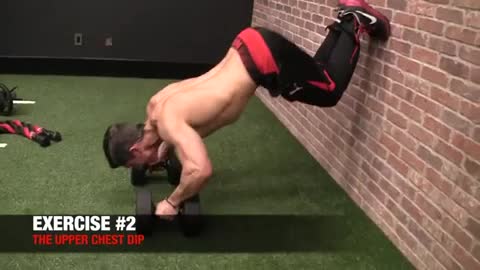
HOW TO DO THE UPPER CHEST DIP:
- Carefully place your feet on a sturdy surface like a wall, while setting your hands on parallel dip bars or on a pair of heavy dumbbells, if you’re comfortable using that option.
- With your feet supported, walk your body into position so your torso is angled forward and stable.
- From here, lower your upper body down between the dip bars (or dumbbells), keeping control on the way down.
- At the bottom, your chest should align between your hands, creating a deep stretch across the upper chest.
- Pause briefly at this point, focusing on squeezing the pecs and maintaining tension.
- Then press yourself back up to the starting position, driving through the chest rather than the arms, while keeping your feet firmly braced on the wall.
WHAT MAKES IT EFFECTIVE: Unlike a Traditional Chest Dip, which emphasizes the lower chest and triceps, this wall-supported variation shifts the load directly onto the upper chest fibers. The body angle, foot positioning, and chest alignment ensure that the pecs stay under tension through the full range of motion. The wall support also forces you to stabilize while pressing, engaging the core and shoulders as secondary players.
DECLINE PUSHUPS: PROGRAMMING AND PROGRESSION
The Decline Pushup delivers far more than chest growth.
By demanding stability through the core and shoulders, it improves posture and pressing mechanics, while also teaching the body to move as a coordinated unit.
These qualities translate directly to physical activity, whether that’s recreational training, athletic development, or day-to-day movement.
For athletes in strength sports, the carryover quickly becomes obvious. The core stability and pressing strength developed here support barbell movements like the Bench Press and Overhead Press.
For those building custom workouts at home or on the road, the Decline Pushup offers a scalable exercise that doesn’t require specialized equipment but still provides meaningful progression.
Here’s how you can fit Decline Pushups into your workouts and, more importantly, how you can progress the exercise when it’s time to challenge yourself.
WHERE TO PLACE IT
For those relying heavily on bodyweight training, Decline Pushups can be treated as a primary press, taking the place of barbell or dumbbell work.
When performed with strict form and progressive resistance, they provide enough loading to drive real strength and size gains.
In a more traditional gym setting, they often work best as a secondary exercise, especially something to perform after heavier presses.
This allows you to accumulate high-quality volume without overloading the joints.
They can also be programmed as a finisher at the end of a chest or push workout, where higher reps under fatigue push the chest, shoulders, and triceps to exhaustion.
The role you assign to the Decline Pushup should match your current fitness goal and overall training routine.
SETS AND REPS
The way you structure sets and reps determines the kind of adaptation you’ll see.
If your goal is strength, lower rep ranges (around 6 to 10 reps per set) paired with added resistance from a weighted vest, plates, or resistance bands will help build pressing power.
For hypertrophy, moderate rep ranges of 10 to 15 with strict tempo and control create the tension needed for muscle growth.
If endurance or conditioning is the priority, higher rep sets, often performed close to failure, are the most effective.
Here the Decline Pushup can be paired with other push-up variations like Plyometric Pushups or Diamond Pushups for metabolic stress and full muscular fatigue.
By tailoring the reps to your goal, you make sure the movement is delivering the right stimulus instead of just being another pushup.
HOW TO PROGRESS
Progression is the difference between decline pushups being a useful tool and them becoming stale.
The simplest form of progression is leverage: raising the feet higher increases load on the chest and shoulders.
But as I mentioned earlier, be careful not to go so high up that you turn the exercise into a Handstand Pushup.
External resistance can also be added through weighted vests, plates balanced on the back, or resistance bands stretched across the body.
Beyond resistance, you can vary tempo by slowing the eccentric, pausing at the bottom for increased tension, or adding explosive drive at the top to build power.
The key is consistent progressive overload. Without it, even the most effective exercise plateaus.
The Bench Press isn’t the only way to build a bigger chest.
Decline Pushups prove that with nothing more than your bodyweight and the right setup, you can hit stubborn muscle fibers, build pressing strength, and improve stability at the same time.
Work them into your routine and you’ll find chest gains come just as much from angles and control as they do from heavy iron.
Check out our complete line of ATHLEAN-RX Supplements and find the best training program for you based on your fitness level and goals.

- The Decline Pushup shifts more of your bodyweight forward, forcing your chest, shoulders, arms, and core to handle greater tension.
- That simple change in angle makes the exercise harder, more targeted, and far more effective for building strength and muscle than a Standard Pushup.
- Here’s how to do Decline Pushups:
- Put your feet on something solid like a bench, box, wall, or even the edge of your couch. It doesn’t need to be high. A foot or two off the ground is enough to make the difference.
- Place your hands on the floor, shoulder-width apart.
- Squeeze your glutes, brace your abs, and think “straight board” from your head to your heels. Don’t allow your hips to sag.
- Lower with control. Bend your elbows and bring your chest down toward the floor.
- Keep your elbows angled slightly back, not flared out like chicken wings. Go all the way until your chest is just above the ground.
- Push through your hands and drive yourself back up, keeping your body tight and your feet steady on the platform.
- Don’t snap your elbows straight. Lock them out smoothly, staying in control.
DECLINE PUSHUPS FAQ
Decline Pushups are good for more than just making pushups harder.
By elevating your feet, you immediately increase the load on your upper body, which forces the chest, shoulders, and triceps to work much harder than in the flat version.
At the same time, your core is put under pressure to keep your body straight, which means you’re training stability while building pressing strength.
They’re also one of the most accessible moves you can do. You don’t need a barbell, a pair of dumbbells, or a machine. You just need a bench, box, or even your couch.
They’re an efficient way to build muscle and strength while improving body control, making them useful for beginners and advanced lifters alike.
Yes, but that’s exactly why they’re valuable!
When you put your feet up, more of your body weight shifts forward into your chest, shoulders, and arms. That makes each rep feel heavier compared to the flat pushup.
The angle also forces you to stabilize through your core, so your hips don’t sag, which adds another layer of difficulty.
Most people who can knock out high reps of Regular Pushups are surprised at how quickly decline Pushups humble them.
If you want to challenge yourself without adding weights, this is one of the simplest ways to do it.
Yes, Decline Pushups are one of the most effective bodyweight moves for targeting the upper chest.
By pressing from this steeper angle, you shift activation to the clavicular fibers of the pecs, which are the same ones that give the chest a more defined, complete look when developed.
Flat Pushups and Chest Dips emphasize the mid and lower chest, which often leaves the upper chest undertrained.
Decline Pushups help fill that gap, creating balance across the chest while also training the shoulders and triceps.
If your chest looks flat up top or you’ve plateaued on benching, Decline Pushups might be the missing link.
REFERENCES
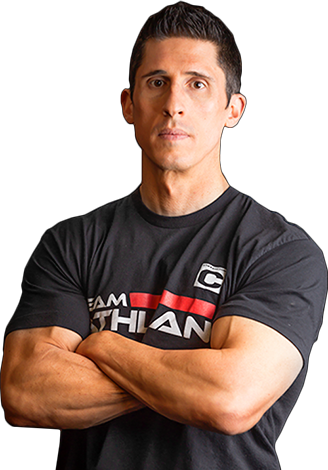
Jeff Cavaliere M.S.P.T, CSCS
Jeff Cavaliere is a Physical Therapist, Strength Coach and creator of the ATHLEAN-X Training Programs and ATHLEAN-Rx Supplements. He has a Masters in Physical Therapy (MSPT) and has worked as Head Physical Therapist for the New York Mets, as well as training many elite professional athletes in Major League Baseball, NFL, MMA and professional wrestling. His programs produce “next level” achievements in muscle size, strength and performance for professional athletes and anyone looking to build a muscular athletic physique.
